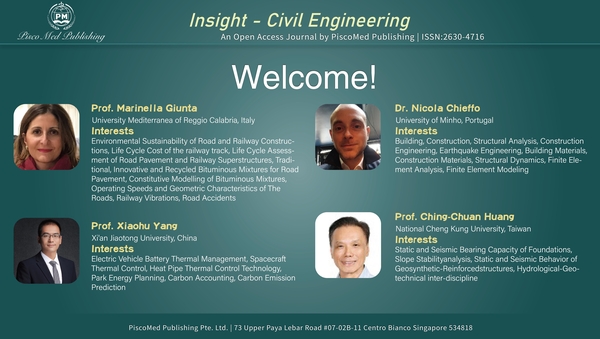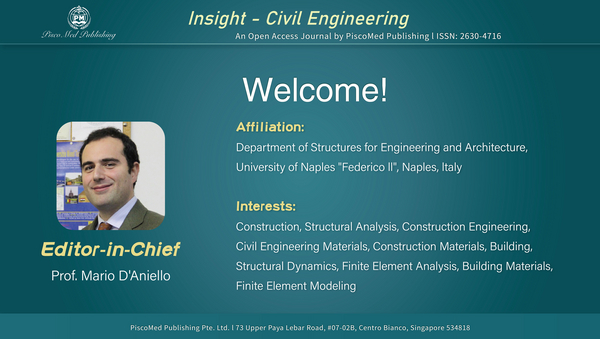Announcements
-
2025-04-28
-
New Image Requirements (effective from April 20, 2025 submissions)
2025-04-20To enhance and ensure the quality of article images, the editorial board has introduced specific formatting requirements for all new submissions (effective from April 2025). Please refer to the AUTHOR GUIDELINES section for more information.
Read more about New Image Requirements (effective from April 20, 2025 submissions) -
Innovative Technology for Enhanced Concrete Construction
2024-11-16Researchers from the Institute of Construction Management and Economics at Graz University of Technology have developed a prototype of a control system for concreting processes on construction sites as part of their DigiCoPro project. Using sensors and advanced algorithms, the system aims to minimize errors and reduce resource waste by eliminating the need for rework.
Read more about Innovative Technology for Enhanced Concrete Construction -
Transition to Semi-Annual Publication Frequency
2024-09-30We are excited to announce an important change in our publication frequency. Starting October, our journal will transition from an annual publication format to a semi-annual format. This change comes in response to the growing interest and the high quality of submissions we have received.
Read more about Transition to Semi-Annual Publication Frequency -
Notification on Authors Adhering to Ethical Standards
2024-09-21At Insight - Civil Engineering, we are committed to upholding publication ethics. Authors are required to follow these key principles:
Read more about Notification on Authors Adhering to Ethical Standards -
New Editorial Board Member Joins Insight - Civil Engineering
2024-07-10 -
Attention to Submission Guidelines for Authors
2024-06-03We are pleased to announce the submission guidelines for Insight - Civil Engineering. To ensure a smooth and efficient submission process, please adhere to the following guidelines:
Read more about Attention to Submission Guidelines for Authors -
Welcome to Editor-in-Chief
2024-05-08 -
Will Baltimore bridge collapse force U.S. to pay more attention to its infrastructure?
2024-03-29The 617,000 bridges in the U.S. include not just those spanning mighty rivers but also every highway overpass and minor link across a stream—and close to one tenth of them are significantly compromised. “If you have to think in terms of catastrophe, we’re already there,” says Amlan Mukherjee, the director of sustainability focusing on infrastructure at WAP Sustainability Consulting.
Read more about Will Baltimore bridge collapse force U.S. to pay more attention to its infrastructure? -
Volume 6 Issue 1, 2023 is live
2023-12-31The full issue of Volume 6, Issue 1, 2023 is now available online at here! We extend a warm invitation to all scholars engaged in Civil Engineering research to explore this issue. It is our hope that the insights and findings presented herein will stimulate intellectual discourse and foster further investigation in this critical area of study.
Read more about Volume 6 Issue 1, 2023 is live -
Article Processing Charges (APCs)
2023-09-12This is to inform all authors about the Article Processing Charges (APCs) for publishing in Insight - Civil Engineering.
Read more about Article Processing Charges (APCs) -
The Art of Bridge Finite Element Modeling
2021-06-22 -
World Engineering Day for Sustainable Development
2019-03-04 -
Most wear-resistant metal alloy in the world
2018-09-12If you're ever unlucky enough to have a car with metal tires, you might consider a set made from a new alloy engineered at Sandia National Laboratories. You could skid -- not drive, skid -- around Earth's equator 500 times before wearing out the tread.
Sandia's materials science team has engineered a platinum-gold alloy believed to be the most wear-resistant metal in the world. It's 100 times more durable than high-strength steel, making it the first alloy, or combination of metals, in the same class as diamond and sapphire, nature's most wear-resistant materials. Sandia's team recently reported their findings in Advanced Materials. "We showed there's a fundamental change you can make to some alloys that will impart this tremendous increase in performance over a broad range of real, practical metals," said materials scientist Nic Argibay, an author on the paper.
Although metals are typically thought of as strong, when they repeatedly rub against other metals, like in an engine, they wear down, deform and corrode unless they have a protective barrier, like additives in motor oil.
Source from: https://newsreleases.sandia.gov/resistant_alloy/
Read more about Most wear-resistant metal alloy in the world -
Engineered sand zaps storm water pollutants
2018-08-30UC Berkeley engineers have developed a novel method for purifying storm water using manganese oxide-coated sand, which effectively removes organic pollutants and has the potential to create safe drinking water reservoirs for water-stressed communities.
Read more about Engineered sand zaps storm water pollutants








